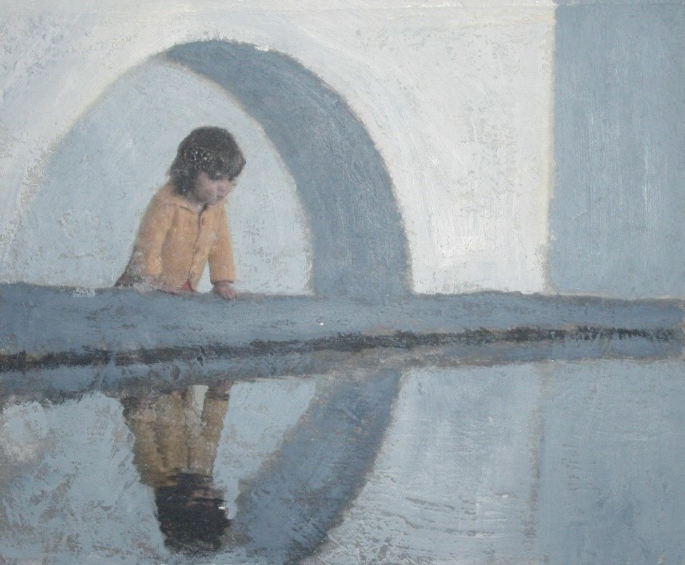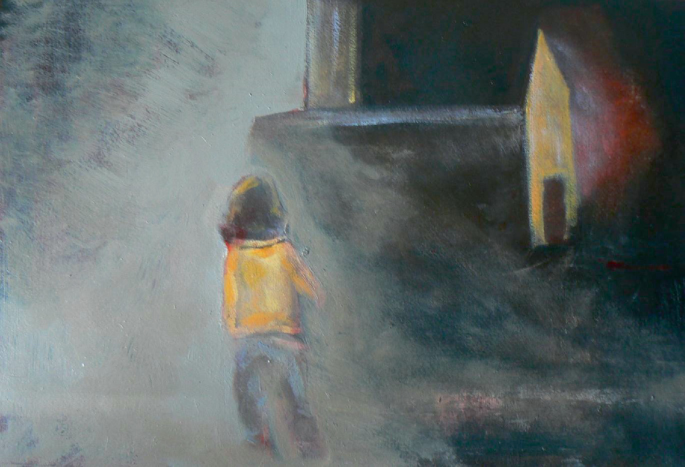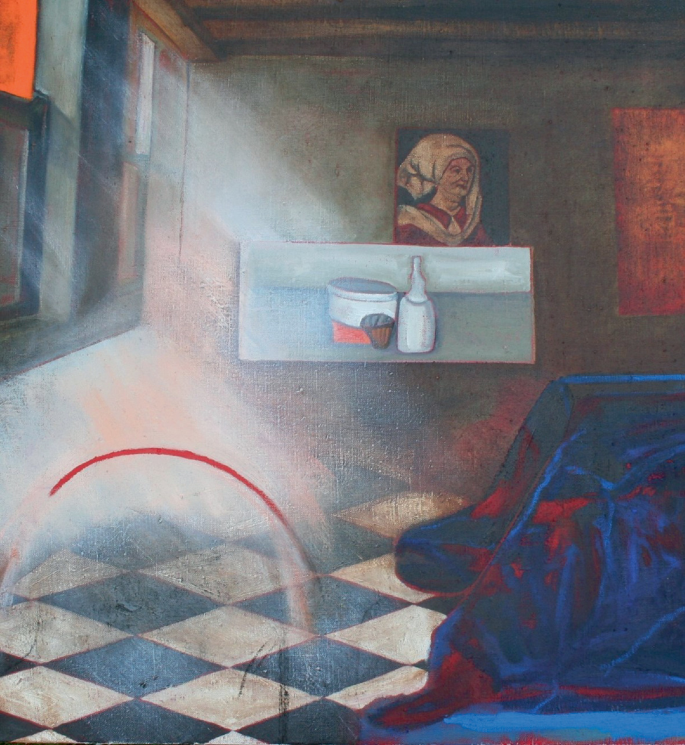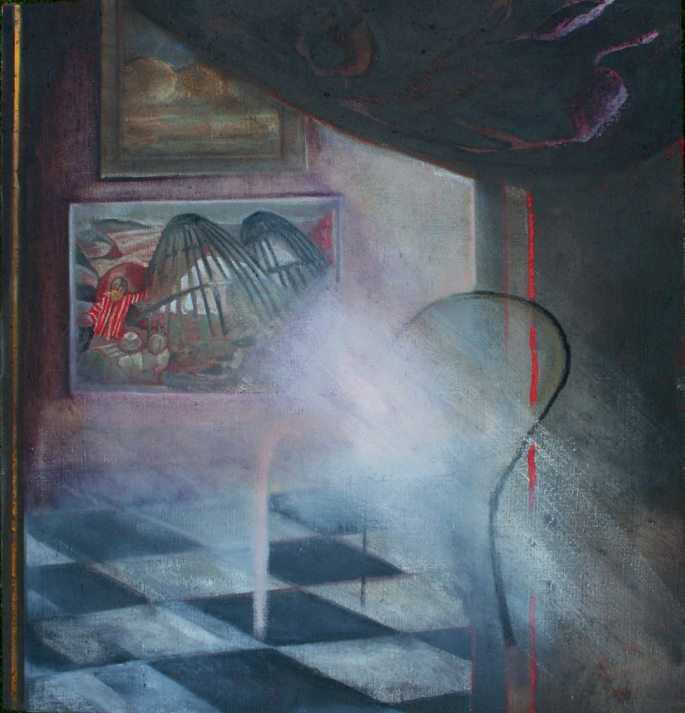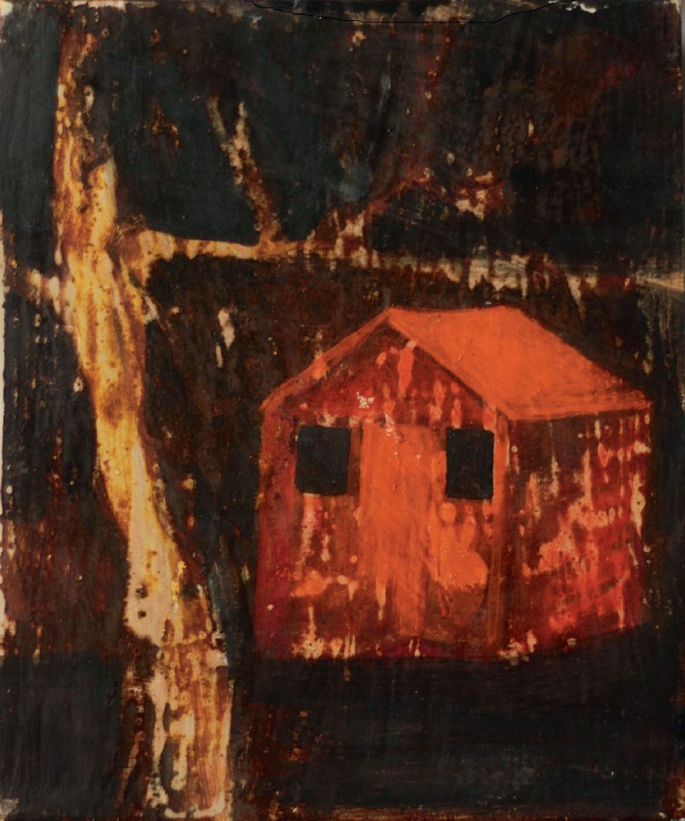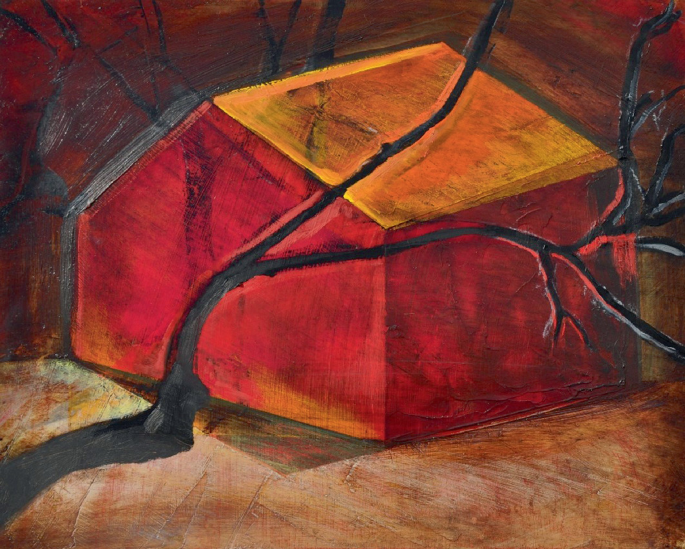Abstract
There are numerous theories of creativity from different academic fields, but an overarching unifying theory is almost impossible. Such theories may be specific to a particular context, or they attempt to generalize, with differences in particular disciplines. For example, in psychology the focus is on a micro level with the study of individuals; whereas in the field of innovation research it is on a macro level and often disregards the individual by focusing more on the context. Creativity on a micro level is examined through revealing the process of an individual artist. It introduces ‘material thinking’; an intellectual pursuit specific to the making process and reflects on what may be learned from the process of making art. Art can create knowledge that constructs environments and changes lives. This personal knowledge and the work of the hand is sometimes at odds with the technological world, but a study of artistic practices enables us to see and think differently. Artworks have impact beyond the esthetic to influence social, political, and economic spheres.
You have full access to this open access chapter, Download chapter PDF
Similar content being viewed by others
Keywords
2.1 Introduction
The Encyclopaedia of Creativity (2011) suggests that theories either become domain specific or find a general approach to deal with domain-based differences [1]. ‘Material thinking’ is an intellectual pursuit particular to the making process described by Carter (2005) [2] and it asks, “what can be learnt from making artworks?” [2]. It references the work of sociologist Sennett [3] and anthropologist Ingold [4],
The paintings of artist/academic Susan Liggett are presented as a case study to illustrate ‘thinking through making’ and ‘knowing from ‘being’ that can look ‘both inside and outside the field of enquiry at the same time’ (ibid). This mode of thinking involves problem finding that is implicit in the making process, that can be more generative than purely focusing on problem solving.
Craft skills and traditional art practices teach us something that enhances understanding that help develop our digital world, without generating nostalgia for obsolete practices. The artist bridges micro and macro creativity to focus both on the individual and the context in which the artwork is made and consumed by audiences. New technology has assisted art practice in challenging its purpose repeatedly over history to make it an important epistemic study.
2.2 Creativity and Its Products
Creativity manifests itself in objects; as Virginia Woolf said, “Intellectual freedom depends upon material things” [5]. Artists and scientists are interested in analyzing materials. Beyond the useful scientific analysis of materials to develop products, there is another form of analysis of the characteristics of matter that are more difficult to measure, such as how the color or form of an object makes us feel. Artifacts and artworks play a key role in how we understand the world.
The academic study of ‘material thinking’ has been critical in helping artists articulate how art practices embody new understandings about individuals and their cultures through the process of making [2]. The importance of Carter’s work lies in the cognizance that some art forms exist ‘in advance of language’ and thus requires ‘translation’ into language’ (ibid). This is the language of creativity that remains elusive, but is explored through practice based artistic research.
2.3 Creativity, Technology, Craft and Skill
In the technological age there is concern that craft skills are becoming obsolete in a drive for productivity. An ability to learn a craft skill through purposeful practice, such as throwing a pot, is often regarded an inferior form of knowledge compared to learning theories and methods from literature. Contemporary sociologist Sennett [3] is an advocate for creative thinking, and rather than considering craft skills in opposition to digital technologies, he thinks of the digital as a new form of craftsmanship. He says that the digital era is not one that should put behind it the traditions of craft; observing that computer coders learn through play and repetition in the same way as a musician learning an instrument [3]. He believes that to make good use of technology, one has to think like a craftsman. In his analysis of what qualities make a good nurse he says
as with Linux programmers, nursing craft negotiates a liminal zone between problem solving and problem finding; listening to old men’s chatter, the nurse can glean clues about their ailments that might escape a diagnostic checklist (ibid).
Against the backdrop of accelerating technology in the 1930s, philosophers Martin Heidegger (1889–1976) and Walter Benjamin (1892–1940) had a concern for tradition and hand skills in relation to technology and art. They both acknowledged technology’s great potential, but also that its roles had not been fully explored at the time, and there could be potential negative consequences. They endorsed an alternative to technology in creative thinking through writing about what can be learnt from art [6, 7].
2.4 Thinking and Making
Anthropologist Tim Ingold (b.1948) draws the distinctions made between theorists and craftsmen; saying theorists make through thinking while craftsmen think through making. His view is that the way we think of making is wrongheaded; as a project that starts with an idea, finds an appropriate material to work with, then ends when this material has taken on its intended form. When creating artworks there is not always an intended idea, it is a process whereby the maker is waiting to receive ideas through the manipulation of materials, rather than imposing them onto the materials from the outset [4].
The process of taking materials from nature to make material objects is known as hylomorphism from the Greek hyle (matter) and morphe (form). Ingold considers the makers process to be “more humble than those implied by the hylomorphic model” and thinks of making as a different process; one of growth where the maker is an active participant who ‘joins forces’ with materials “bringing them together or splitting them apart, synthesizing and distilling, in anticipation of what might emerge” (ibid). Ingold said that.
In the act of making the artisan couples his own movements and gestures – indeed his very life – with the becoming of his materials, joining with and following the forces and flows that brings his work into fruition (ibid, p. 31)
The case study paintings below describe the evolution of a long unstructured process.
Philosopher Gilbert Simondon also questioned hylomorphism. His concept of ‘individuation’ postulates that form is emergent rather than given in the making process; with man inside the world rather than standing on the outside. Theorist and psychoanalysts Gilles Deleuze and Felix Guattari believed also that hylomorphism fails to acknowledge, “matter in movement, in flux, in variation” [8].
2.5 Case Study Susan Liggett Paintings
Painting as a practice remains relevant in the digital age because of what can be learnt from it as a creative process. Technology can distance us from the innate human need to experiment with materials, whereas painting delights our sense of touch, smell and our sight in a visceral, messy and instinctively human way. It can bring us closer to the experience of being human. Paradoxically, by not relying on technology it can teach us about aspects of experience that technology distances us from.
Liggett describes the process of painting as a ‘psychological resonance’; the metaphoric vibration resulting from an inner dialog between ‘subject’ and object’ [9]. By this she means that the process connects us with the world in a unique way that is dependent on seeing, playing around with materials, and being fully present in the world.
Liggett, like many contemporary painters, exploits technology without being reliant on it. She turned to incorporating digital photographs into her work after decades of strictly working from direct observation, to question whether if she heightened the illusory quality of the paintings, would they in some way get closer to the lived experience? (Fig. 2.1). The busyness of her life at the time meant that she felt like she had missed the experience of her child growing up so she questioned whether the slow reflective process of painting would allow her memory to unfold in a richer more rewarding way? A photograph taken in a fraction of a second is viewed in the same fraction of time, but with a painting the viewer has to look longer to absorb significance and meaning.
To her surprise, incorporating the photographic element into the paintings had the opposite effect and distanced her memories, with the photographic images not standing in for her memories as she thought they would. They evoked something quite different; the images were familiar but the emotional attachments within the paintings were quite separate. She then abandoned the photograph and allowed the painterly qualities to bring her closer to the inner experiences of events memorized internally (Fig. 2.2). The painterly marks are evidence of her struggles to visualize a memory made more vivid through the physical process of grappling with paint. To quote Henry James in his novel the ‘Real Thing’: “the unreal is more precious than the real” [10].
Paintings can only be truly seen from the first-person perspective and we bring both our eyes and our emotions to the way we respond to them. After viewing Vermeer’s paintings, ‘The Love Letter’ (1669/70) and ‘The Music Lesson’, (1662/5) Liggett was inspired to make a series of paintings based around the theme of her Mother and her dementia (Figs. 2.3 and 2.4). In the works she wanted to imbue a metaphoric presence of her Mother as she made sense of her struggles with dementia which is represented throught the ghost like arcs that appear incomplete in the image (Figs. 2.3 and 2.4).
Another series of paintings the Oneiric Hut Series are inspired by Gaston Bachelard’s concept of the “oneiric house” which is a “house of dream-memory” [11] that exists within each one of us. Liggett spends a lot of time repeatedly drawing the same places or objects in an attempt to evoke and to draw out their poetic qualities in order to do as Cezanne said to “Dream before nature” [12]. Trees and the hut are repeatedly drawn from direct observation to test compositions and ideas that culminated in a set of paintings that use this repeated hut motif (Figs. 2.5 and 2.6). The objects that Liggett draws in her garden take on new meanings as the creative process transforms the hut that is seen before her eyes into something quite different which evocates otherness.
2.6 Creativity and Research
An increased understanding of the unique forms of knowledge that art embodies has led to an increase in artists undertaking research and studying for research degrees. A Ph.D. is now a standard requirement for those teaching in art departments in UK universities [13]. Making art always starts from the first person perspective of the artist which enables conversations to be enriched and imaginations to be evoked.
Most projects as in Ingold’s account rely on creativity to help to work things out as one goes along, to determine the completion of the work or the ends conceived in advance. There is “interaction and correspondence between articulate and personal knowledge” [4] and it is this knowledge, our lived experience that shapes our objective reality.
2.7 Conclusions
There is a degree of inherent importance in the making process that can get overlooked when processes are replaced by technology. However, the process of making enables us to connect to the world without rejecting technology. This may be seen in the ways painters have adopted and incorporated new technologies into their work. The proliferation of the digital has re-positioned painting in relation to the screen rather than in its visual representations and has facilitated a recording of first-hand experiences of the world. Social media, Facebook, Instagram, etc. can give us a snapshot of our world, but they can sometimes give us a skewed or distorted view, whereas the painted image tells us something more akin to the human condition.
Although it was the photography that taught us the modern idea of the image, it is painting that allows us to internalise it [14].
Creativity has become a commodity in the market-place with “’the creative industries’, ‘the creative economy’ and the ‘creative class’ paradigms of economic growth” [15]. ‘Means and ends’ in contemporary society are often associated with technological advancements. Many artists do not rely on centralized resources, digital transformations or financial investments and largely exist outside of ‘markets’ and ‘political spheres’, and often make a living by other means. This can facilitate more independence and greater creativity.
Interest in technology and art is an expanding field and the next chapter explores in more depth how technology is utilized by artists.
References
Baer, J.: Domains of creativity. In: Runco, M.A., Pritzker, S.R. (eds.) Encyclopedia of Creativity, 2nd edn., pp. 404–408. Academic Cambridge (2011)
Carter, P.H.: Material Thinking: The Theory and Practice of Creative Research. Melbourne University Publishing (2004)
Sennett, R.: The Craftsman. Penguin books, London (2009)
Ingold, T.: Making, pp. 5, 20. Routledge, Abingdon (2013)
Woolf, V.: A Room of One’s Own, p. 119. Hogarth Press (1920), Penguin, London (2002)
Heidegger, H.: The Question Concerning Technology, and other Essays. Harper Perennial, New York (2013)
Donohoe J.: The place of tradition: Heidegger and Benjamin on technology and art. J. Br. Soc. Phenomenol. 39(3), 260–274 (2008). https://doi.org/10.1080/00071773.2008.11006651
Simondon, G.: Individuation in Light of Notions of Form an Information, p. 46. The University of Minnesota Press. https://www.upress.umn.edu/book-division/books/individuation-in-light-of-notions-of-form-and (2005)
Liggett, S.: Psychological resonance and its relationship to site in the work of 5 contemporary painters, p. 303. Ph.D. thesis, University of Wales (2008)
James, H.: The Real Thing. Macmillan, London (1892)
Bachelard, G.: Poetics of Space. Beacon Press, Boston (1969)
Merleau-Ponty, M. Cezanne’s Doubt, p. 3. (1946)
Liggett, S.: Positioning the arts in the research process: perspectives from higher education. In: Earnshaw, R., Liggett, S., Excell, P., Thalmann, D. (eds.) Technology, Design and the Arts—Opportunities and Challenges. Springer Series on Cultural Computing. Springer, Cham (2020). https://doi.org/10.1007/978-3-030-42097-0_2
Schwabsky, B.: GI symposium: painting as new medium. ART&RESEARCH: J. Ideas Contexts Methods 32. http://www.studio55.org.uk/anr/v1n1/schwabsky.html (2006)
Mould, O.: Against Creativity, p. 11. Verso, New York (2020) https://www.versobooks.com/books/2852-against-creativity
Author information
Authors and Affiliations
Corresponding author
Rights and permissions
Open Access This chapter is licensed under the terms of the Creative Commons Attribution 4.0 International License (http://creativecommons.org/licenses/by/4.0/), which permits use, sharing, adaptation, distribution and reproduction in any medium or format, as long as you give appropriate credit to the original author(s) and the source, provide a link to the Creative Commons license and indicate if changes were made.
The images or other third party material in this chapter are included in the chapter's Creative Commons license, unless indicated otherwise in a credit line to the material. If material is not included in the chapter's Creative Commons license and your intended use is not permitted by statutory regulation or exceeds the permitted use, you will need to obtain permission directly from the copyright holder.
Copyright information
© 2023 The Author(s)
About this chapter
Cite this chapter
Liggett, S. (2023). Creativity and the Arts: Traditional and New Media. In: Creativity in Art, Design and Technology. Springer Series on Cultural Computing(). Springer, Cham. https://doi.org/10.1007/978-3-031-24869-6_2
Download citation
DOI: https://doi.org/10.1007/978-3-031-24869-6_2
Published:
Publisher Name: Springer, Cham
Print ISBN: 978-3-031-24868-9
Online ISBN: 978-3-031-24869-6
eBook Packages: Computer ScienceComputer Science (R0)





